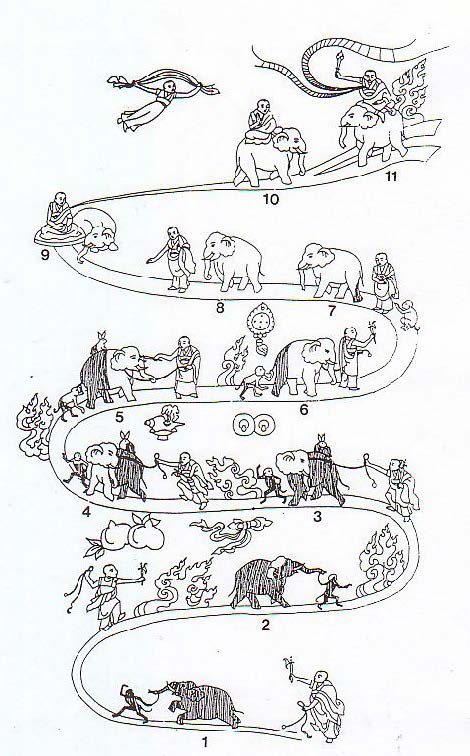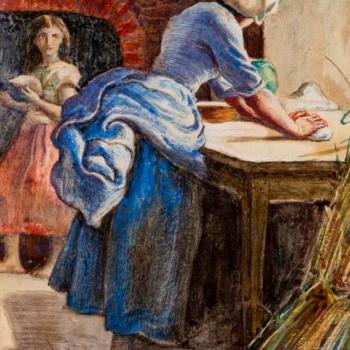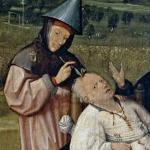Similar to Zen’s Ten Ox Herding pictures, Vajrayana Buddhism offers an illustration of the spiritual path using elephants. As with the Ox Herding pictures there are several different versions to the Elephant pictures.
I stumbled upon a commentary by the Householder Dharma teacher Piya Tan Being Sin. I love the different angles on the interior life presented in these various spiritual maps. And here’s one more…
Piya Tan’s comments follow, lightly edited:
The Vajrayana model depicts progressive stages of development. It is depicted as a pathway traversed by a monk (the meditator), a black elephant and a black monkey in eleven stages. The elephant represents the mind and its blackness is the “sinking of the mind” or torpor (Tib jingwa, Skt nirmagnata, Pali middha). A wild elephant is dangerous; so is an untrained mind. The elephant’s footprint, which is very large, here represents mental defilements. The black monkey (“scattering of the mind” or restlessness: Tib gopa, Skt auddhatya, Pali uddhacca) leads the elephant: restlessness results when our mind runs after worldly things.
Comments on the images:
(1) A monk (the meditator), holding a rope (mindfulness) (Tib denpa; Skt smrti, Pali sati) in his left hand and a goad (full awareness) in his right, runs after an elephant led by a monkey. Here the meditator has no control over his mind.
(2) He almost catches up with the elephant.
(3) The monk throws a noose around the elephant’s neck and it looks back; the mind is beginning to be restrained by mindfulness. The rabbit on the elephant’s back represents torpor which has by then become subtle.
(4) As the elephant (the mind) becomes more obedient, the rope (mindfulness) needs less pulling.
(5) The elephant is being led by the rope and the hook, and the monkey follows behind. There is less restlessness now; mainly full awareness is used.
(6) Both the animals follow behind and the monk does not have to look back (he focusses his attention continuously on his mind); the rabbit (subtle restlessness) has disappeared.
(7) The elephant is left on its own doing without the need of rope or hook; the monkey takes leave. Torpor and restlessness—both mild—ocur only occasionally here.
(8) The elephant, now completely white, follows behind the man; the mind is obedient and there is no torpor or restlessness but some energy is still needed to concentrate.
(9) The monk sits in meditation while the elephant sleeps at his feet; the mind is able to concentrate without effort for long periods of time and there is great joy and peace. The flying monk represents zest and lightness of the body.
(10) The monk sits on the elephant; he now finds true calm (Tib zhine, Skt samatha, Pali samatha) and needs less energy to concentrate.
(11) In the last stage, the monk on the elephant’s back holds a sword (the realization of emptiness, sunyatā) and cuts off the two black lines representing the obstacle to full knowledge (jñey’āvarana) and the defiling obstacle (kles’āvarana). The term āvarana is a synonym for nívarana (mental hindrance) (D 1:246, Sn 66 1005, Nc 379, Divy 378). The monk is here cultivating insight (Tib lhagthong, Skt vipasyanā, Pali vipassanā) and on his way to the perfection of wisdom.
Fire appears at different stages of the path. This represents the energy necessary for meditation. It gradually diminishes at the calm stages as less energy is needed to concentrate. It flares up again at the last stage when the monk is practising insight.













